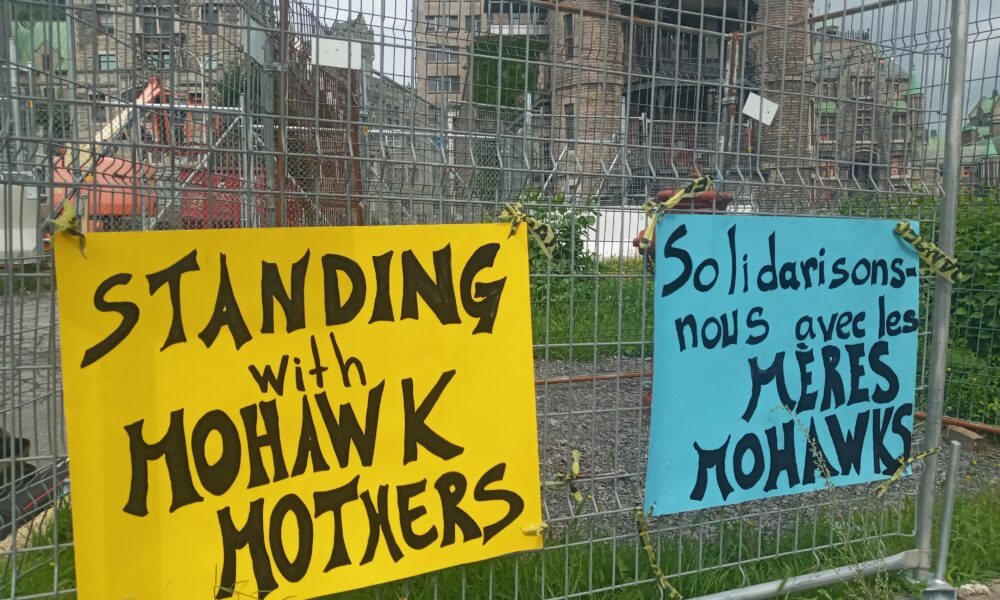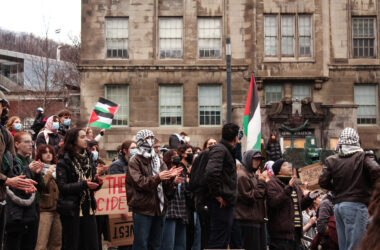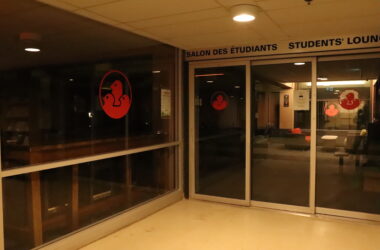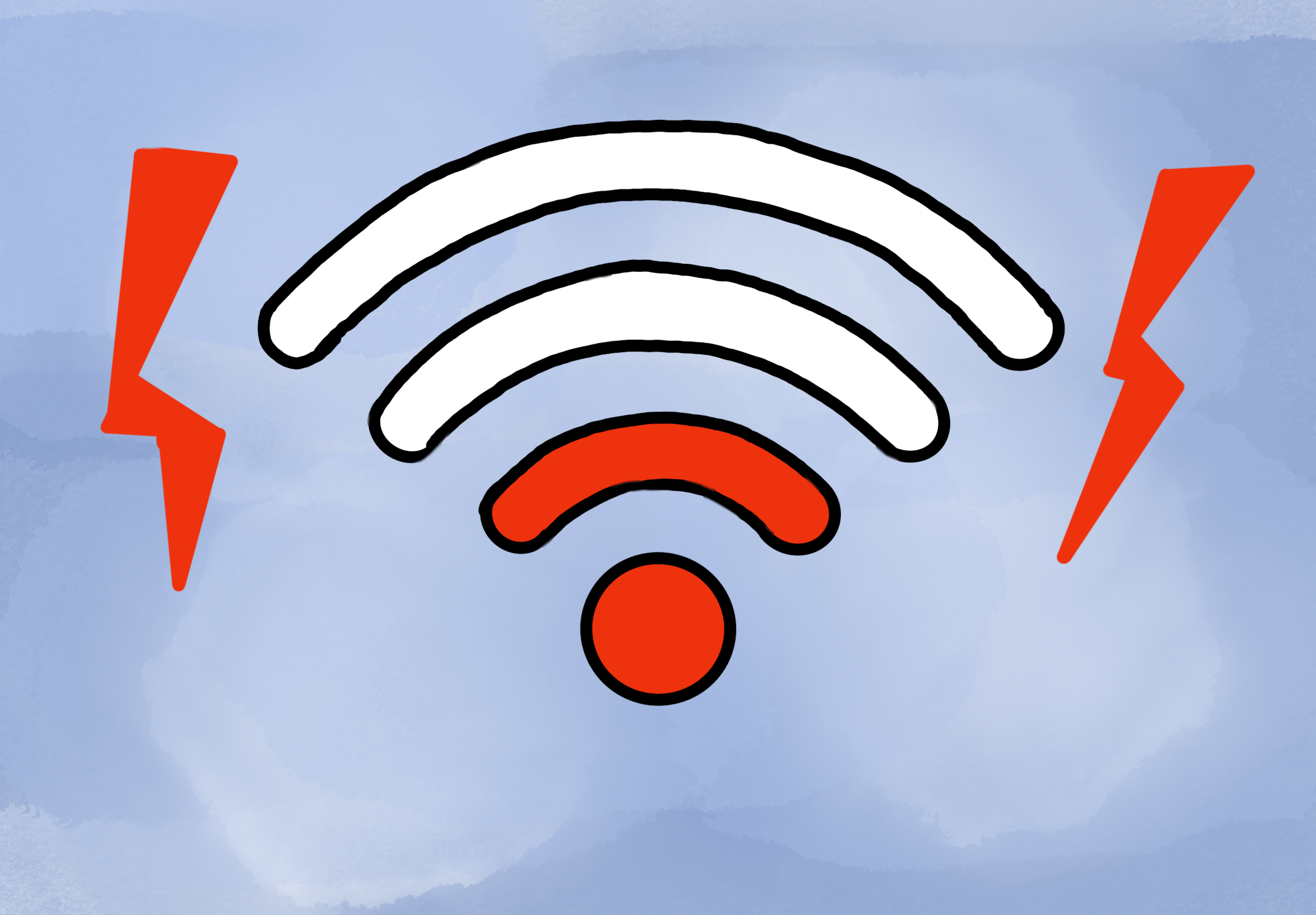CW: Mentions of assault and death
On July 25, the Kanien’kehá:ka Kahnistensera (Mohawk Mothers) were verbally assaulted by security personnel on McGill’s New Vic project site. A week later, on Aug. 3, McGill issued a comprehensive press release about the ongoing investigation into the New Vic project site, announcing that nine anomalies were found during archaeological work. However, the Mohawk Mothers soon released their own statement, alleging that McGill and the Société québécoise des infrastructures (SQI) had failed to report all the findings on the site and isolated the Mothers from the investigation.
The Mothers have been present for the archaeological excavation on the New Vic site, alongside archaeologists and security personnel hired by SQI as stipulated by their settlement agreement with McGill, the SQI, the Royal Victoria Hospital (RVH), the City of Montreal, and the Attorney General of Canada. Court-appointed Indigenous cultural monitors—who are responsible for performing cultural ceremonies and ensuring that excavation is completed in accordance with Indigenous protocols—have also been present on the site.
In an interview with The Tribune, Mohawk Mother Kwetiio shared that on the afternoon of July 25, the Mothers and cultural monitors were on the New Vic site taking a virtual meeting when archaeologists informed them that work would end earlier than usual that day. As the meeting was wrapping up, Kahentinetha, another of the Mothers, decided to walk up the hill on the New Vic site, prompted by one of the cultural monitors.
“After we finished our meeting […], Kahentinetha was coming down the hill towards us from the security guards and said, ‘They’re calling the police.’ I was startled,” Kwetiio said. “I went up the hill […], and [a member of the Mothers’ team, Alex*] came along with me.”
Alex pulled out their phone to record the interaction. However, when the pair got to the top of the hill, a security guard whose name remains unknown snatched Alex’s phone out of his hands.
“She grabbed [the phone] and started hollering at [Alex] that ‘No, I’m not being filmed, and you have no right,’” Kwetiio said. “And here’s me being like, ‘Wait a minute, calm down, like there are older people here.’”
The security guard then handed Alex’s phone to another security guard, who stopped the recording and deleted it from the device. Kwetiio explained that the interaction became increasingly hostile when the security guard told the Mothers that they were not allowed to be present on the property unless they had a court order and demanded that the Mothers show her the document.
“I said, ‘[…] You’ve been here all week. I’m pretty sure you know who we are, and you know why we’re here. And if you give [Alex] back [their] phone, [they] can pull it up on our email, and you will see the court order,’” Kwetiio said.
The security guard went on to threaten to call the police numerous times. In an interview with The Tribune, Mother Kahentinetha shared some of the remarks the security guard made toward the Mothers.
“[The security guard] says, ‘You should have some kids to take care of,’ or something like that. I said, ‘We had kids, but they ended up here in McGill and they were tested on.’ She says, ‘That’s a lie, that’s a lie.’ And I said, ‘Well, that did happen, and you got the benefit from this.’ And that’s when she said, ‘Yes, we sure did. We got the benefits,’” Kwettio said.
The security firm did not respond to The Tribune’s request for comment.
Since the altercation, the cultural monitors have refused to be present for additional work on the site until a resolution is reached. As the monitors must be present for any onsite work, the archaeological efforts were halted on July 26 but resumed Aug. 23.
A private meeting to discuss the altercation took place on Aug. 1, with the Mothers, the SQI, cultural monitors, and a representative of the Office of the Independent Special Interlocutor, Kimberly Murray, present. The Mothers pleaded with the defendants to hire a Kahnawake-based security firm to patrol the site, which was initially met with resistance from the defendants. However, all parties are in ongoing negotiations to potentially hire a Mohawk security firm. Currently, an SQI-appointed security firm continues to oversee the project’s security, while two representatives from a security firm chosen by the Mothers are also to be present on the site.
While work remains halted after the altercation, ground penetrating radar (GPR)—a non-intrusive method of surveying and mapping land—has already been used on the site. On Aug. 3, McGill Provost and Vice Principal Christopher Manfredi issued a press release to all students and staff informing them that the GPR was performed by Geoscan—a geophysical archaeological firm that was recommended by the appointed panel of archaeologists. He shared that GeoScan’s findings have deemed that “no likely grave-type features [were] identified across the site,” but that nine anomalies, containing potential grave-type features, were found.
According to anthropologist and associate of the Mothers, Phillipe Blouin, McGill’s announcement failed to include numerous additional findings. He explained that while only the nine reported anomalies were the correct size to be potential adult burial sites, several others of different sizes were omitted from the press release.
“There’s a much larger number of unknown anomalies [where] it’s possible that there are graves of children or graves without coffins,” Blouin said. “These results have been squarely silenced, denied, and minimized by the SQI.”
SQI asserted that they have not denied or minimized the results of Geoscan’s report in a written statement to The Tribune. They stated that Geoscan indicated that the features of the “unknown anomalies” are not necessarially indicative of graves.
In an interview with The Tribune, Associate Provost Angela Campbell explained that the reason McGill’s press release did not include the unknown anomalies was because the nine conclusive findings were of the most interest to the McGill community. The additional discoveries were highly unlikely to be potential graves, and were not definite findings.
“[Our press release] wanted to communicate things that were certain,” Campbell said. “What was certain is that there’s nine potential unmarked sites, and so that’s where the work would begin [….] There’s no denying that there were many [findings] that were called an unknown source.”
Blouin explained that the panel of archaeologists wanted to review and characterize the found anomalies, in addition to allowing the Canadian Archaeological Association (CAA) to peer review the data. However, the service providers would not allow this.
SQI argued that the panel of archaeologists’ mandate was limited to identifying the appropriate archaeological techniques for the site and recommending service providers to carry out such techniques. They stated that it was never agreed upon to allow the panel to review or interpret the data obtained by the GPR.
Additionally, Campbell explained that Geoscan was a service provider recommended by the panel of archaeologists. She also stated that as GeoScan is one of the most qualified archaeological firms in the country, she felt that it should be entrusted with the interpretation of GPR findings.
“We need to be able to trust that company to collect and interpret their own data,” Campbell said.
“That’s the reason why we don’t feel that we ought to subject the data to a second review. That company has the expertise, and we have to have the confidence in them to do that work.”
While the investigation was halted, excavated soil remained above ground, which the Mothers worried could be damaged by weather conditions.
“That is soil that is supposed to be sifted for human bones, and it’s left to the rain [….] It’s extremely improper for any type of archaeological inventory, and even more when there’s potential criminal ramifications and forensics,” Blouin said.
In an interview with The Tribune, Executive Director of the New Vic project Pierre Major clarified that while the soil left on top of the land has been documented and covered with tarps during the investigation’s halt, the soil is unlikely to contain evidence.
Direct excavation has resumed in recent weeks in the areas flagged by search dogs. However, the Mothers still feel there is a lack of sufficient communication and cooperation from the defendants.
“The SQI and McGill are taking every little grey area that we haven’t created a protocol for, and they’re using those grey areas to try and take over the investigation and not make it Indigenous-led,” Kwetiio said.
*Alex’s name has been changed to preserve their anonymity.









